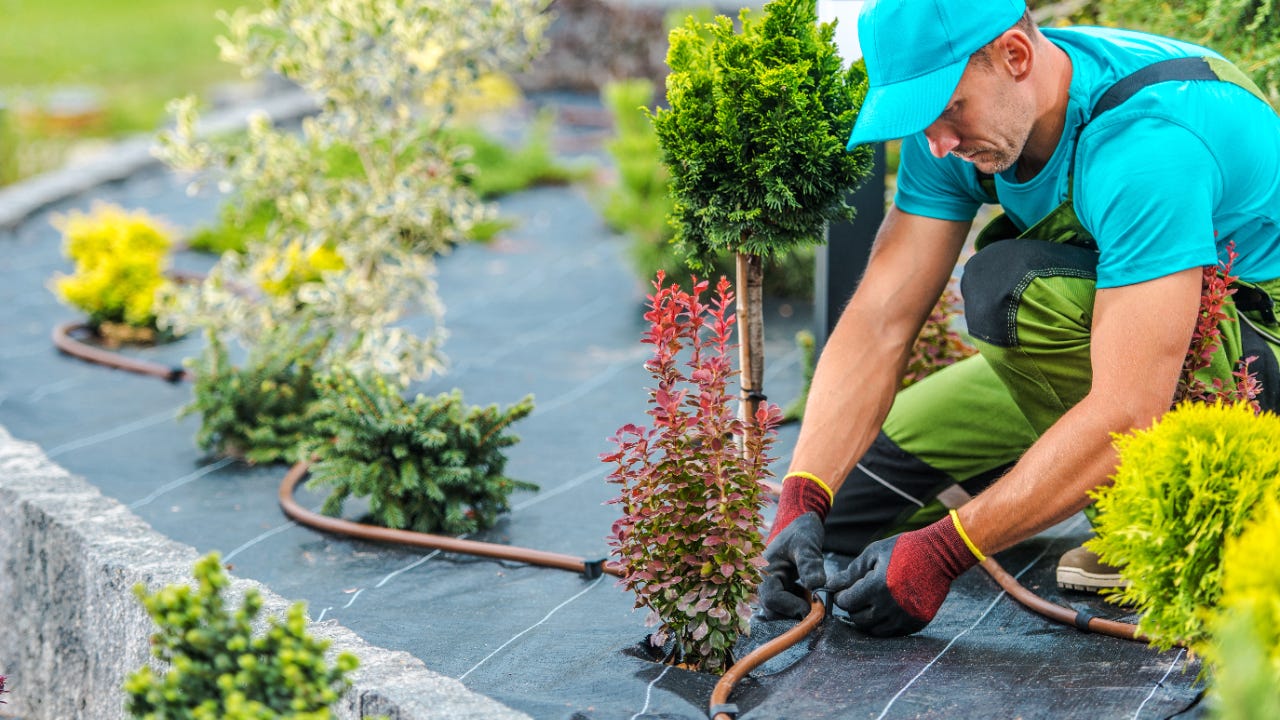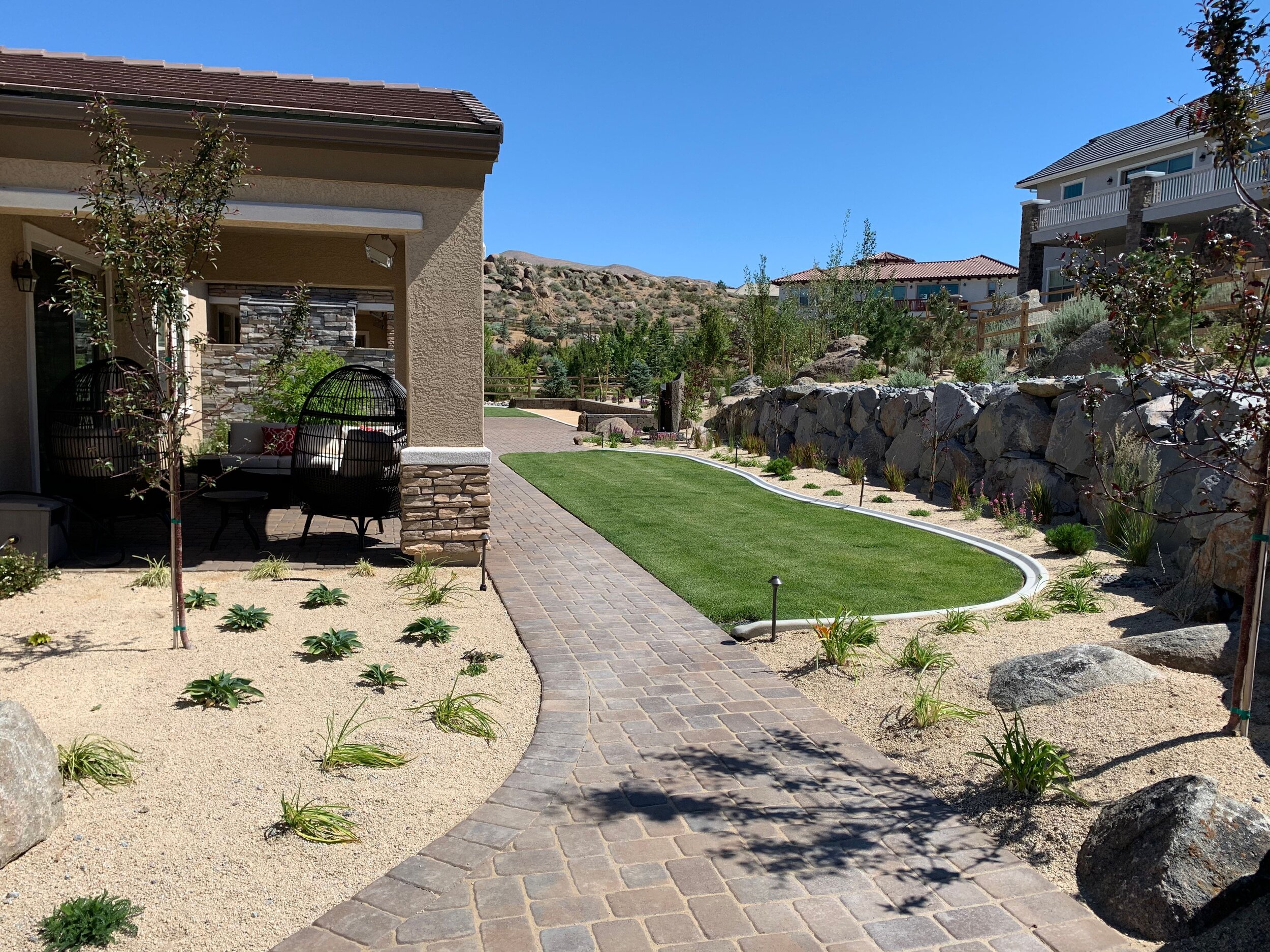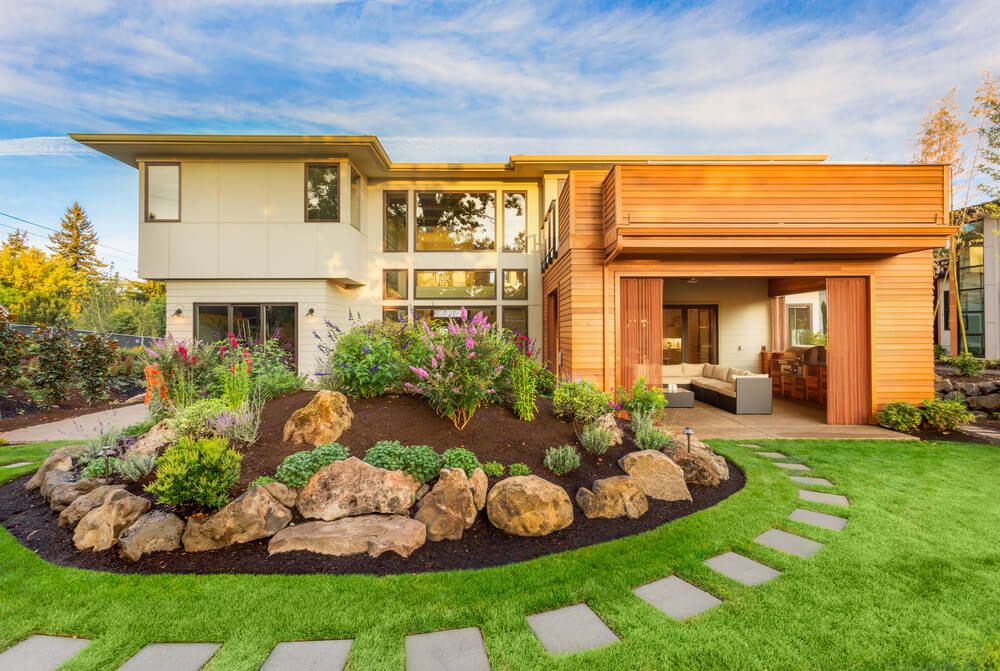Elevate Your Residential or commercial property's Visual With Sustainable Landscaping Designs and Eco-Friendly Practices

Benefits of Sustainable Landscaping
Executing sustainable landscape design techniques not just preserves natural deposits however likewise advertises biodiversity and improves general environmental health. By choosing environmentally friendly landscaping methods, home owners can reap a multitude of advantages that expand beyond just aesthetic appeal. One substantial benefit is the decrease of water usage through using drought-resistant plants, rain yards, and reliable watering systems. This not only decreases energy costs yet likewise contributes to water conservation initiatives in the neighborhood.
In addition, lasting landscaping can boost soil health and wellness by lessening the use of chemical plant foods and pesticides, thereby producing a healthier atmosphere for plant growth and useful dirt organisms. This, subsequently, improves the overall resilience of the landscape to hold up against environmental stress factors and climate adjustment influences - bush removal Jacksonville. Additionally, sustainable landscape design practices can attract varied wild animals, consisting of pollinators like butterflies and , cultivating a more balanced and dynamic ecosystem within the property
Incorporating Native Plants
To build on the advantages of lasting landscape design, a critical emphasis on incorporating indigenous plants can further boost environmental durability and promote biodiversity within the landscape. Native plants are species that naturally occur in a specific location and have actually advanced to grow in the neighborhood environment, dirt conditions, and community. By consisting of native plants in landscaping styles, homeowner can decrease water usage, lessen the requirement for chemical pesticides and fertilizers, and support the neighborhood wild animals populace.
Integrating native plants also helps in maintaining the one-of-a-kind personality and identification of an area's plants. These plants often need much less maintenance as soon as developed, making them a affordable and sustainable landscaping solution in the future. Furthermore, native plants can attract indigenous pollinators like and butterflies, adding to the general health of the ecosystem.
When choosing indigenous plants for landscaping jobs, it is necessary to choose species that are well-suited to the specific ecological conditions of the website. Consulting with local baby rooms or organic gardens can offer valuable advice on selecting the appropriate indigenous plants for a certain area. By incorporating indigenous plants into landscape design styles, building owners can develop lovely, lasting outdoor areas that profit both the setting and the community.

Water Conservation Methods
Effective irrigation methods play an essential role in lasting landscaping practices, guaranteeing optimal water preservation initiatives in exterior areas. Implementing strategies such as drip watering, rainwater harvesting, and smart irrigation systems can considerably reduce water wastage while keeping a healthy and balanced landscape. Drip irrigation supplies water straight to the roots of plants, lessening dissipation and drainage. Rainwater harvesting entails gathering rain from roof coverings and keeping it for later use in watering, lowering the reliance on municipal water resources. Smart irrigation systems utilize weather information and dirt moisture degrees to adjust sprinkling timetables, avoiding overwatering and advertising water efficiency.
Along with innovative irrigation approaches, xeriscaping is one more water-saving landscape design method that concentrates on using drought-resistant plants, compost, and efficient watering to create a low-water landscape official site style - bush removal Jacksonville. By selecting native plants that are appropriate to the local climate and dirt problems, building owners can minimize the demand for excessive watering, inevitably saving water and promoting a lasting outside environment
Eco-Friendly Hardscaping Concepts
Enhancing outdoor spaces with environment-friendly hardscaping features can contribute substantially to lasting landscaping methods. When considering hardscaping elements, go with products like reclaimed wood, recycled concrete, or all-natural rock to decrease environmental impact. These materials not only add a distinct aesthetic attract your outside room however additionally lower the need for new resources removal.
Executing permeable paving alternatives such as crushed rock or permeable concrete can help in reducing water overflow and promote groundwater recharge. These alternatives allow rain to permeate into the ground, preventing erosion and minimizing click here for info the burden on stormwater systems.
Incorporating native plants into hardscaping layouts can further enhance eco-friendliness by sustaining regional wildlife and minimizing the requirement for excessive watering or chemical therapies. By incorporating upright gardens or environment-friendly walls, you can introduce more plants into metropolitan settings, enhancing air quality and biodiversity.
Including energy-efficient lighting, such as solar-powered LEDs, right into hardscaping styles can reduce power usage and reduced your property's carbon impact. Prioritizing environment-friendly hardscaping concepts not just enhances the elegance of your outdoor room but likewise shows a commitment to ecological stewardship.
Upkeep Tips for Sustainable Landscapes

Consistently prune plants to advertise healthy and balanced growth and protect against overgrowth that can result in pest problems or diseases. Use natural fertilizers to nourish the dirt and plants without harmful chemicals that can leach right into the environment. For hardscaping aspects, such as absorptive pavers or stone pathways, consistently tidy them to avoid particles buildup and see this site preserve their functionality. By staying positive with upkeep jobs, you can protect the appeal and sustainability of your landscape for several years to find.
Verdict
In conclusion, sustainable landscaping practices use many advantages for residential property proprietors, from boosting the aesthetic appeal of the surroundings to promoting environmental conservation. By incorporating native plants, carrying out water preservation methods, and using eco-friendly hardscaping ideas, homeowner can create lovely landscapes that are also eco liable. With proper maintenance, lasting landscapes can contribute and thrive to a much healthier ecosystem for both humans and wild animals.
In addition, sustainable landscaping can enhance dirt health by decreasing the usage of chemical plant foods and pesticides, thereby developing a much healthier atmosphere for plant growth and advantageous dirt organisms.To develop upon the benefits of sustainable landscape design, a critical focus on incorporating native plants can better enhance environmental strength and advertise biodiversity within the landscape. By consisting of native plants in landscape design layouts, residential or commercial property owners can minimize water usage, decrease the requirement for chemical pesticides and fertilizers, and support the local wild animals populace.
These plants frequently require less upkeep once developed, making them a sustainable and affordable landscape design option in the lengthy run. By integrating native plants into landscaping styles, residential or commercial property owners can create attractive, sustainable exterior rooms that profit both the neighborhood and the atmosphere.